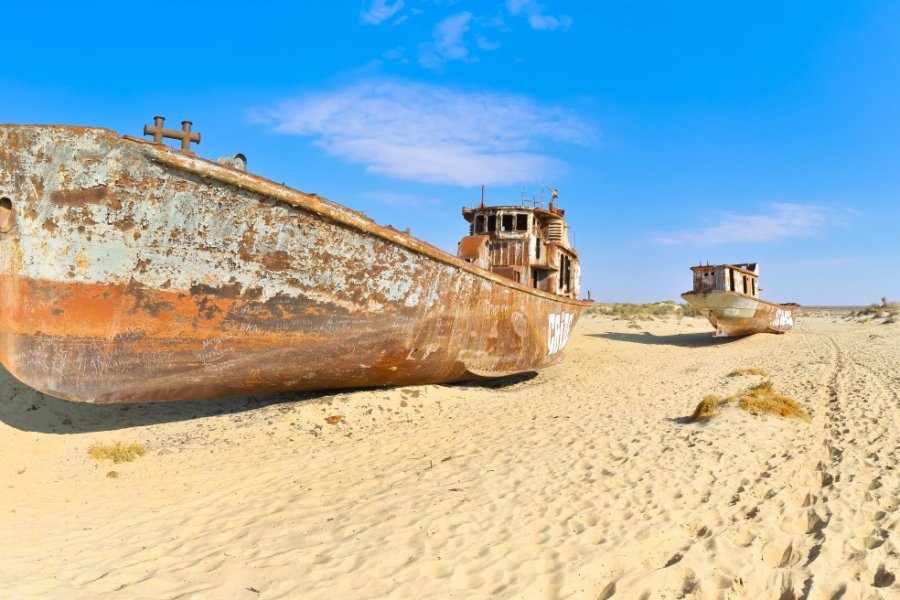Travel Guide Moynaq
Find an accommodation
Advertising
The port of Moynaq, like that of Aralsk in Kazakhstan, was still a prosperous fishing port before the Second World War. Moynaq was home to one of the largest fish canneries in the former Soviet Union, now a deserted set of ruined walls. When in 1921 famine struck Russia, Lenin mobilized the Aral Sea fishing fleet, which in a few days shipped over 20,000 tons of fish and saved the country from starvation. Today, the sea is empty. The saturation by pesticides and chemical fertilizers dumped has left no chance to the fauna and flora which, in any case, would not have survived the increase in the degree of salinity of the water following the lowering of the sea level. The disaster began in the 1950s and accelerated in the 1960s, when massive irrigation works linked to intensive cotton cultivation were in full swing. Gradually, the two rivers that fed the Aral Sea, the Amu Darya and the Syr Darya, became thinner and thinner, and more and more polluted. In 1994, the sea level had dropped by almost 20 m. Today, there is no more water on the Uzbek side while only a small area resists on the Kazakh side.If the population of Moynaq has long been exiled, leaving only a few thousand inhabitants in this port which counted 60 000 before the beginning of the disaster, it is all that of Khorezm which is threatened today. The disappearance of the sea has led to the disappearance of the evaporation bubble which was formed above the water and protected the whole area from the cold winds of the North, from Siberia. This is no longer the case, and the temperature in winter drops to -40°C. This is the only way to ensure that the city is able to function as a place for people to live and work, and that the city is able to function as a place for people to live and work in. This is the only way to ensure that the people of the city are able to live in harmony with their environment and the people of the city. The Soviet government, with its ex-USSR taste for gigantism, had considered diverting hundreds of kilometers of Russian river water. However, the collapse of the Soviet Union put an end to the project. Although the Uzbek government has become aware of the ecological disaster that the disappearance of the sea represents, it certainly does not have the means to turn back the clock.As far as the city of Moynaq is concerned, or rather what is left of it, it is a very sad daily life that survives today. You will find some life at the entrance of the city, around the bus station where you can find the few stores still open. The old city center is now a ghost town where abandoned buildings stand: the theater, the hotel, the cannery, housing... The ship's graveyard that used to attract a few visitors has shrunk to a mere 5 ships since the locals took the materials and sold them elsewhere. In short, a trip to Moynaq is a sad illustration of what life becomes when a sea disappears: a hell.
What to visit Moynaq?
Advertising
Suggested addresses Moynaq
Weather at the moment
Advertising
Organize your trip with our partners Moynaq
Transportation
Book your plane tickets
Car Rental
Boat rental
Accommodation & stays
Find a hotel
Holiday rental
Find your campsite
Tailor-made trip
Immersion travel
Services / On site
Activities & visits
Find a doctor








